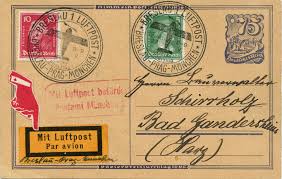Mini Sheet: Mail Flights of Charles Lindbergh in Greenland 1933 (Greenland 2020)
Mail Flights of Charles Lindbergh in Greenland 1933 (Greenland 2020)
14 September (Greenland ) within release Europa (C.E.P.T.) 2020 - Ancient Postal Routes goes into circulation Mini Sheet Mail Flights of Charles Lindbergh in Greenland 1933 face value 10*16 Danish krone
| Mini Sheet Mail Flights of Charles Lindbergh in Greenland 1933 in catalogues | |
|---|---|
| Michel: | Mi: GL 859KB |
Mini Sheet is square format.
Also in the issue Europa (C.E.P.T.) 2020 - Ancient Postal Routes:
- Stamp - Mail Flights of Charles Lindbergh in Greenland 1933 face value 16;
- Mini Sheet - Mail Flights of Charles Lindbergh in Greenland 1933 face value 10*16;
- Stamp - Mail Flights of Charles Lindbergh in Greenland 1933 face value 18;
- Mini Sheet - Mail Flights of Charles Lindbergh in Greenland 1933 face value 10*18;
- Booklet - Europa (C.E.P.T.) 2020 - Ancient Postal Routes face value 204;
- Stamp - Mail Flights of Charles Lindbergh in Greenland 1933 face value 16;
- Stamp - Mail Flights of Charles Lindbergh in Greenland 1933 face value 18;
- Booklet Pane - Mail Flights of Charles Lindbergh in Greenland 1933 face value 102;
- Booklet Pane - Mail Flights of Charles Lindbergh in Greenland 1933 face value 102;
Mini Sheet Mail Flights of Charles Lindbergh in Greenland 1933 it reflects the thematic directions:
An aircraft (pl. aircraft) is a vehicle that is able to fly by gaining support from the air. It counters the force of gravity by using either static lift or the dynamic lift of an airfoil, or, in a few cases, direct downward thrust from its engines. Common examples of aircraft include airplanes, rotorcraft (including helicopters), airships (including blimps), gliders, paramotors, and hot air balloons.Part 1 (Definitions and Abbreviations) of Subchapter A of Chapter I of Title 14 of the U. S. Code of Federal Regulations states that aircraft "means a device that is used or intended to be used for flight in the air."
Aviation is the practical aspect or art of aeronautics, being the design, development, production, operation and use of aircraft, especially heavier than air aircraft. The word aviation was coined by French writer and former naval officer Gabriel La Landelle in 1863, from the verb avier (synonymous flying), itself derived from the Latin word avis ("bird") and the suffix -ation.
Postal history is the study of postal systems and how they operate and, or, the study of the use of postage stamps and covers and associated postal artifacts illustrating historical episodes in the development of postal systems. The term is attributed to Robson Lowe, a professional philatelist, stamp dealer and stamp auctioneer, who made the first organised study of the subject in the 1930s and described philatelists as "students of science", but postal historians as "students of humanity". More precisely, philatelists describe postal history as the study of rates, routes, markings, and means (of transport).
The mail or post is a system for physically transporting documents and other small packages; or, the postcards, letters, and parcels themselves. A postal service can be private or public, though many governments place restrictions on private systems. Since the mid-19th century national postal systems have generally been established as government monopolies with a fee on the article prepaid. Proof of payment is often in the form of adhesive postage stamps, but postage meters are also used for bulk mailing. Modern private postal systems are typically distinguished from national postal agencies by the names "courier" or "delivery service". Postal authorities often have functions other than transporting letters. In some countries, a postal, telegraph and telephone (PTT) service oversees the postal system, in addition to telephone and telegraph systems. Some countries' postal systems allow for savings accounts and handle applications for passports.




